Connector Types and Uses
Connector Types andUses
In this chapter, you will learn about
- Structured wiring connectors
- Specialized connectors
- Cable preparation and connector installation
Connectors are a major part of home technology integration and home automation. Properly installing the right connector on the right cable is very important to the success of a home’s system. Connectors (and their receptacles) create the interfaces that allow electrical signals to flow over the cables between devices. Without them there would be no data, sound, images, or control on the network.
In the structured wiring environment, not that many different types of cable and wiring are used. Typically, the majority of the cabling is twisted-pair (TP) and coaxial, with some quad wire and speaker wire used as required. As a result, the number and types of connectors used is also fairly limited. However, in different applications, you have connector choices based on the type of connection or interface a particular system may require.
This chapter focuses on the connectors commonly used with the cable and wire used in a structured wiring system and the processes used for their installation.
Connector Terminology
There is a definite set of terms used to specify, describe, and name connectors. Some of these terms represent the name of the standards authority that defined a certain connector; others are shorthand or abbreviations for technical terms; and still others are names that describe the shape, use, or application of a connector or are names that have just caught on.
Here is a list of terms common to just about all connectors that describe parts and components of connectors in general:
- BackboardA plywood panel mounted on the wall of a telecom or distribution where a cross-connect device is mounted.
- ConnectorA device that allows electrical signals to flow from one wire or cable to another.
- DB-n connectorAlso called D-shell connector, this type of connector facilitates parallel signal transfers. The housing is D-shaped and contains either a male or female plug. The “n” in DB-n represents the number of pins or contacts (male or female) in the connector. For example, a DB-9 connector has 9 pins or contacts and a DB-25 has 25 pins or contacts. Figure 2-1 shows an example of a data bus (DB) connector.

Figure 2-1: Examples of male (right) and female (left) DB-9 connectors - FemaleA type of connector plug that has pin receptacles in its housing. See Figure 2-2.
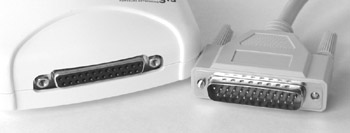
Figure 2-2: Examples of connector plugs with male contacts (right) and female (left) contacts - MaleA type of connector plug that has one or more pins extending from its housing. See Figure 2-2.
- Mass terminationAlthough gruesome sounding, this means that all of the wire in a cable are terminated into a connector in a single operation.
- Molded cableA cable assembly that has molded connectors terminating one or both of its ends. Figures 2-2 and 2-3 show molded cables.
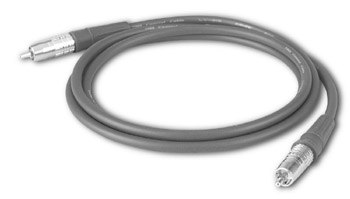
Figure 2-3: An example of a molded cable
Photo courtesy of Canare Corporation of America.
- PlugA male connector housing with male or female contacts (see Figure 2-2).
- ReceptacleA female connector housing with either male or female contacts.
- Strain reliefA molded sleeve or a clamping device that is either incorporated into the connector body or can be attached during termination that provides mechanical support to ensure the cable and wires are not pulled out of the connector and the contacts broken during installation, handling, or from the weight of the cable itself. See Figure 2-4.
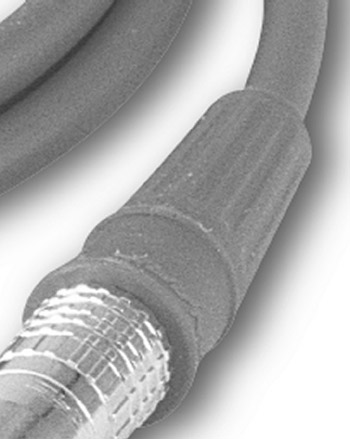
Figure 2-4: The strain relief on a molded audio cable
Original image courtesy of Canare Corporation of America.
| CROSS-REFERENCE |
The glossary contained in Appendix B of this book contains additional connector, cable, and wiring terms and their meanings. |
Power Connectors
When installing some systems in a home technology project, it may be necessary to connect to the AC power system. As a part of this activity, you may need to use one or more power connectors.
The basic types of power connectors are
- LugAlso called a compression lug, this connector is attached to the end of a power cable. When used with stranded wire, a lug is crimped onto the wire; when used with solid core wire, the lug should be soldered to the wire. Lugs come in a variety of types: single-hole or dual-hole flat connectors, ring connectors, forked connectors, and spade connectors. Figure 2-5 shows a selection of a variety of lug connectors. Lugs have different ratings for use with different wire sizes and some require specialized crimping tools.
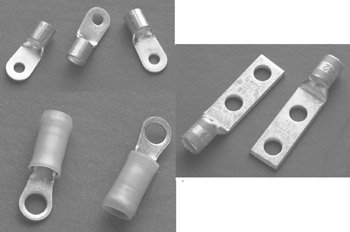
Figure 2-5: Single-hole and dual-hole lug connectors
Photo courtesy of Telect, Inc.
- PlugAs shown in Figure 2-6, the standard three-contact electrical plug is commonly attached to the power cord of virtually all electrical appliances, control systems, and power supplies in North America. Lamps and other low-voltage devices use only a two-contact plug. There are several types of electrical plugs used in the United States, with different plugs used for different applications. Around the world, electrical plug patterns, shapes, and sizes vary by country and region (see the following section).

Figure 2-6: A standard three-contact U.S. electrical plug - ReceptacleA device with female contacts that makes an electrical contact with an inserted plug.
- Terminal stripNot to be confused with a plug strip, a terminal strip is used to make multiple connections by either soldering a wire to a contact, connecting with a lug style connector, or connecting with a screw terminal. Figure 2-7 shows an example of a solder terminal strip. Terminal strips are used in a variety of systems, including AC and DC power and telecom cabling.
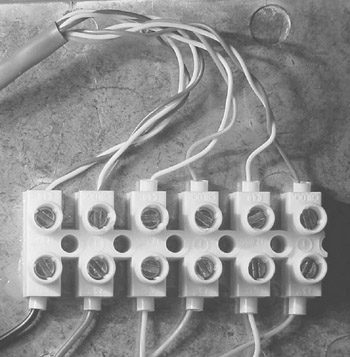
Figure 2-7: A terminal strip on which connecting wires are soldered
Photo courtesy of Molex, Inc.
Electrical Plugs
As I discuss in the preceding section, electrical plugs vary from country to country, depending on the electrical system in use. Figure 2-8 illustrates some of the various types of plugs used throughout the world. In the United States and Canada, Type A and B plugs are used. Table 2-1 lists the power characteristics and electrical plugs used in a sample of other countries.
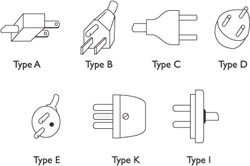
Figure 2-8: A sampling of the different electrical plugs used around the world
|
Country |
Voltage |
Frequency |
Plug Type |
|---|---|---|---|
|
Australia |
230V |
50 Hz |
I |
|
China |
220V |
50 Hz |
A and I |
|
Colombia |
110V |
60 Hz |
A and B |
|
Czech Republic |
230V |
50 Hz |
E |
|
Denmark |
220V |
50 Hz |
C and K |
|
Egypt |
220V |
50 Hz |
C |
|
France |
230V |
50 Hz |
E |
|
Germany |
230V |
50 Hz |
C |
|
India |
240V |
50 Hz |
C and D |
|
Ireland |
230V |
50 Hz |
E |
|
Japan |
100V |
50/60 Hz |
A and B |
|
Mexico |
127V |
60 Hz |
A |
|
Russian Federation |
220V |
50 Hz |
C |
|
Sweden |
220V |
50 Hz |
C |
Coaxial Cable Connectors
A wide variety of coaxial cables are available, but in a structured wiring system, the primary coaxial cable types used are RG6 and RG59 (“RG” stands for Radio Guide).
F Type Connectors
The F-type connector is the most commonly used connector for home systems that apply coaxial cabling. F-type connectors are available as either a screw-on or a crimp-on type connector.
F-Type Twist-On Connectors
To terminate a coaxial cable with a crimp-on F-type connector (see Figure 2-9), use the following steps:
- Use a knife to cut around the plastic outer layer about 1-inch (25 millimeters) from the end of the cable. Take care not to cut the mesh or braided copper shielding under the outer jacket of the cable. Remove the cut away outer covering and separate wires of the braided shielding so that they can be twisted together to create a “pigtail.”
- After removing the braided shielding, a metal foil layer should be exposed. Cut off the exposed portion of the foil shielding.
- Use a knife to cut off the white dielectric material, leaving about 1/8-inch (3 mm) of the dielectric material extending out onto the center core to serve as an insulator that prevents the metallic braid “pigtail” from making contact with the center conductor. Be careful not to cut into or through the center conductor wire.
- Pull the shielding “pigtail” back over the uncut portion of the cable’s outer jacket and twist or screw the F-type connector plug over the cable end as far as it can go. The sleeve of the connector should also cover a portion of the “pigtail,” trapping it against the outside of the cable. Cut off any exposed portion of the “pigtail.”
- Use wire cutters to cut the end of the exposed center conductor wire at a 45-degree angle, leaving about 1/8-inch (3 mm) extending beyond the end of the F-type jack body. Be careful when handling the terminated cable and jack, the end of the center wire should be a very sharp point.
Note If the F-type connector is to be used outside the home, such as to an antenna or satellite dish, it must be sealed to prevent water from getting inside the cable or connector body. The recommended way to seal the cable against water seepage is to wrap the connector sleeve and a portion of the cable with waterproofing or self-amalgamating tape.
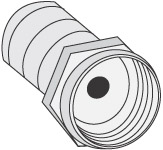
Figure 2-9: An F-type twist-on connector for coaxial cabling
F-Type Crimp-On Connectors
Some technicians believe that a crimp-on style F-type connector (see Figure 2-10) provides a tighter and more secure connection. To terminate a coaxial cable with a crimp-on F-type connector, use the following steps:
- Use a knife to cut away about 3/8-inch (9.5 mm) of the cable’s outer covering, exposing the braided metal shielding. Be careful not to cut the braided shielding.
- Fold the braided shielding back over the outer jacket of the cable.
- Cut away the metal foil shielding and cut the white dielectric material so that only 1/4-inch (6.3 mm) of the dielectric material is exposed (and 1/8-inch of the center conductor wire is exposed). Take care not to nick, cut, or ding the center conductor wire when cutting the dielectric material. Clean away any dielectric material dust or fuzz that may be on the center wire.
- Slide the crimp ring over the folded back braided metal shielding and over the cable’s outer jacket.
- Check the exposed edge of the foil shielding that was cut away earlier and ensure that it is lying flat against the dielectric material under the edge of the outer jacket. If any burrs or flags are sticking up, they need to be smoothed down by twisting them flat against the dielectric material.
- Push the connector sleeve (mandrel) back under the uncut portion of the cable so that the mandrel is placed between the braided shielding and the foil shielding inside the uncut cable.
- Slide the crimp ring towards the stripped end of the cable so that it fits over the mandrel inside the cable.
- Use a coaxial crimping tool to secure the connector to the cable.
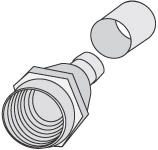
Figure 2-10: An F-type crimp-on connector for coaxial cabling
Coaxial Cable Strippers and Crimpers
When working with coaxial cable, or any cable or wire for that matter, it’s best to use tools specifically designed for use with that particular cable type. Several specialized tools are available for stripping and terminating coaxial cable. However, not every tool is designed to work with every type of coaxial cable, so you need to be sure that your tools are specifically designed for RG58, RG59, or RG6, depending on which coaxial cable you are installing.
StrippersCoaxial cable strippers are designed to cut through the outer jacket and dielectric layers of a cable, leaving the proper amount of conductor wire for installing any of the various coaxial cable connectors. Figures 2-11 and 2-12 show the two most common types of coaxial cable strippers. Remember that cable strippers are specified to a certain cable type, so be sure you match the tool to the cable and the task.
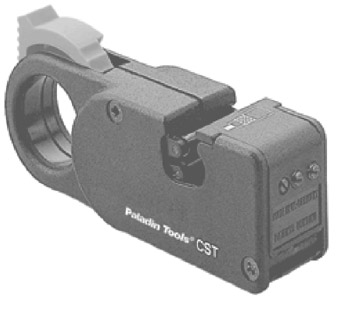
Figure 2-11: A handheld coaxial cable stripper
Photo courtesy of Paladin Tools, Inc.
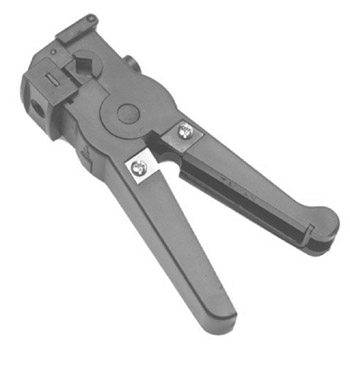
Figure 2-12: A plier-type coaxial cable stripper
Photo courtesy of Harris Corp.
Coaxial Cable CrimpersCrimpers are used to clamp a metal connector to a cable. Coaxial cable crimp-on connectors require the use of a crimper tool, but not just any crimper. Crimpers are typically designed to work with a specific type of cable and, in many cases, a special type of connector. Typically, when you are working with coaxial cabling in a home system, the crimper you use is a specialized coaxial cable F-type connector crimper like the one shown in Figure 2-13.
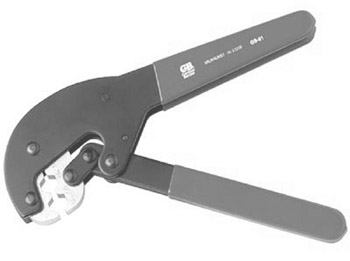
Figure 2-13: A coaxial cable F-type crimper tool
Photo courtesy of Graber Bender.
Coaxial Cable Termination KitsSeveral cable and connector vendors have prepared connector kits for use with coaxial cable. A typical kit includes all of the pieces and tools commonly needed to terminate coaxial cable in a home system, including a number of professional grade F-type plugs, a coaxial cable stripping tool, an F-type connector crimping tool, and a small tone testing device. In most cases, the tools are specialized for either RG59 or RG6 cable.
BNC Connector
Another type of coaxial connector that could be used in a residential system on RG58 and RG6 cable in data networking and some audio/visual applications is the Bayonet Neill Concellman (BNC) connector. The male portion ( plug) of a BNC connector has a bayonet-like shell with two small pins that fit into spiral slots located on the female portion (receptacle) of the connector. The plug is inserted into the receptacle and twisted into a locked position.
There are two styles of BNC connectors used: a BNC-T connector and a BNC barrel connector. The BNC-T connector is commonly used for Ethernet data networks to interconnect a computer’s network adapter to the coaxial cable. However, a BNC barrel connector can also be used with some network adapters as well. When used with video and Community Antenna Television (CATV, which is better known as cable TV) systems, the barrel style connector is the most common. Figure 2-14 shows a BNC-T connector and Figure 2-15 shows a barrel style BNC connector.
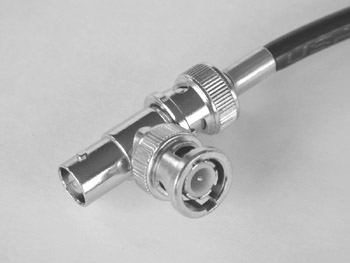
Figure 2-14: A BNC-T style connector
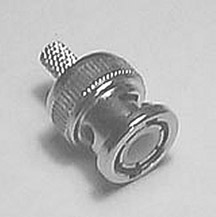
Figure 2-15: A BNC barrel-style connector
TP Cable Connectors
Depending on the application, Category (Cat) 3, 5, 5e, and higher TP cable use one of the following modular connectors (which are also referenced as keystone connectors because of the shape of their plugs and jacks):
- Registered jack (RJ)-11This is the standard two- or four-conductor telephone connector used to connect telephone handsets to telephone outlets. Figure 2-16 shows an RJ-11 plug.
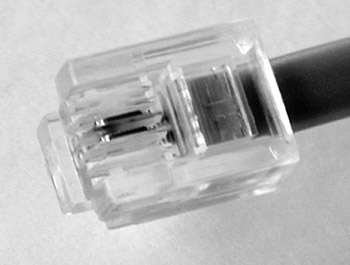
Figure 2-16: An RJ-11 plug - RJ-31xThis is the connection type used to interface a security system into a home’s telephone system. Figure 2-17 shows an RJ-31x modular jack.
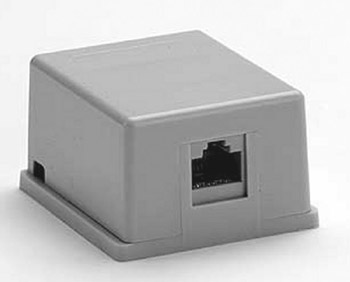
Figure 2-17: An RJ-31x modular jack - RJ-45This is the standard TP connector used for data networking. Figure 2-18 shows an RJ-45 connector.
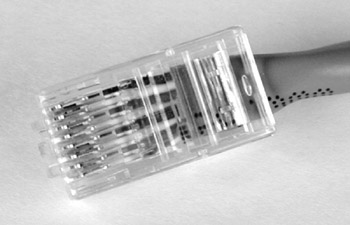
Figure 2-18: An RJ-45 plug
Registered Jacks
The “RJ” in each of the jacks listed above stands for registered jack, which means that the jack and plug conform to the standards specified in the Universal Service Order Code (USOC), published by the U.S. Federal Communications Commission (FCC), which defines the standard telephone and data communications jacks and plugs. Table 2-2 lists the most common USOC jacks. Although the standard refers mostly to jacks, it also includes the plugs that fit the jacks.
|
Registered Jack |
Contacts |
Conductors Used |
Usage |
|---|---|---|---|
|
RJ-11 |
6 |
2 |
Single-line telephone |
|
RJ-12 |
6 |
4 |
Single-line telephone on key system |
|
RJ-13 |
6 |
6 |
Single-line telephone on key system |
|
RJ-14 |
6 |
4 |
Two-line telephones |
|
RJ-15 |
3 |
3 |
Single-line weatherproof telephone connections |
|
RJ-17 |
6 |
2 |
Medical equipment |
|
RJ-21X |
50 |
50 |
Amphenol connector for 25-pair 66-style punchdown blocks |
|
RJ-22 |
4 |
4 |
Telephone handset connector |
|
RJ-25 |
6 |
6 |
Three-line telephones |
|
RJ-31X |
8 |
4 or 6 |
Security system to telephone interface |
|
RJ-45 |
8 |
4 or 8 |
Data networking connector |
|
RJ-48 |
8 |
4 or 8 |
T-1 networking connections |
|
RJ-61X |
8 |
8 |
Eight-conductor version of RJ-45 |
| Note |
You will commonly see the registered jack designations in Table 2-2 listed with a suffix of C, W, or X, which refers to the type of connection and equipment in which they are most commonly used. The C refers to desk sets; the W refers to wall sets; and the X refers to special-purpose jacks. |
Wiring RJ 11 Jacks and Plugs
To attach an RJ-11 jack or plug to a run of TP wiring, the first thing you must know is how many lines the jack will be supporting. If the jack and plug are being used to connect a single telephone line, then only two conductors are needed to make the connection; however, it is always best to connect four or more conductors to provide for expansion of the telephone system in the future. As listed in Table 2-2, two-line connections use four conductors (which is technically an RJ-14 configuration) and three-line connections use six conductors (RJ-25).
The reason each line requires two conductors is that two contacts are required for telephone communications. These two lines, which are referred to as “Tip” and “Ring” are the modern-day equivalents of the plugs used by switchboard operators years ago. When the operator inserted the plug into the jack to complete a circuit between an incoming call and a telephone in her office or building, the tip of the plug completed one loop and the metal ring around the shaft of the plug completed the other, linking the incoming circuit to a particular line and handset.
To terminate TP wire in an RJ-11 configuration, one wire pair (typically the blue and white-blue) is connected to contacts (pins) 3 and 4 (the center two contacts) of the jack and plug, as illustrated in Figure 2-19.
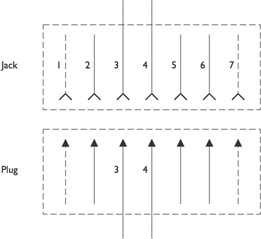
Figure 2-19: A diagram of the wiring used with an RJ-11 connector
Most RJ-11 jacks and plugs use a 66-type punchdown or insulation displacement connector (IDC) into which each wire is inserted using a punchdown tool fitted with a 66-type blade. The photo in Figure 2-20 of an RJ-45 jack shows IDC contacts on the back of the connector. The punchdown tool, see Figure 2-21, pushes an individual wire into an IDC slot and cuts away any excess insulation and wire. The contact is made by the IDC piercing the insulation on the wire.
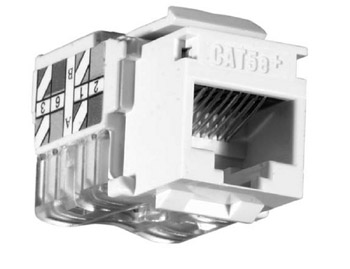
Figure 2-20: An RJ-45 jack with IDC contacts
Photo courtesy of SignaMax Connectivity Systems.
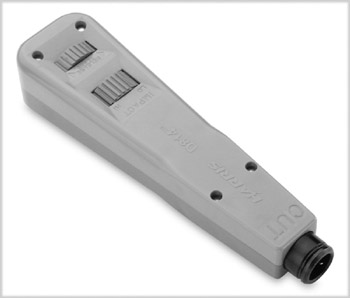
Figure 2-21: A punchdown tool is used to insert wires into the IDC on punchdown connectors.
Photo courtesy of Harris Corp.
| Note |
The 66-style punchdown is used for telephone and other voice connections. If data networking connections use an IDC-type connector, they use the newer 110-type punchdown. |
RJ-11 jacks and plugs can also be attached to TP wiring using a crimper with the proper attachments. After the appropriate wires are placed into the slots corresponding to the proper pins on the jack or plug, the crimper is used to cinch clasping material on the connector to hold the wire in place. Figure 2-22 shows a TP wiring crimper.

Figure 2-22: A crimper can be used to attach RJ jacks and plugs to a cable.
Photo courtesy of Tecra Tools, Inc.
Wiring RJ 31X Jacks and Plugs
An RJ-31X jack can be connected to one of the outside phone lines of a home and optionally to the home’s inside phone lines. It seizes an outgoing phone line, alerting the monitoring station when there is a security event. If you wish to allow the security system to seize more than one line to prevent interruptions, then separate RJ-31X jacks can be connected to each of the inside phone lines.
If the RJ-31X is only being connected to the outside lines, then only two of its conductors need be connected. However, if one inside line is to be made available for line seizure by the security system, two additional conductors are connected for that line. If more than one inside line is to be connected to the security system, multiple RJ-31X jacks are required.
RJ-31X jacks have a small 66-type punchdown block inside the housing of the jack. Punchdown blocks make it easy to connect inside lines to outside lines. Assuming an RJ-31X jack has eight inside IDCs and eight outside IDCs in the punchdown block, Table 2-3 lists the configuration of the punchdown to connect the jack to the telephone lines and Figure 2-23 illustrates this connection.
|
Wire |
Source |
Inside Phone Line #1 |
Inside Phone Line #1 |
Outside Phone Line #2 |
Outside Phone Line #2 |
|---|---|---|---|---|---|
|
White (TP) |
Jack |
Tip |
|||
|
Blue (TP) |
Jack |
Ring |
|||
|
White-Blue (TP) |
Internal wiring |
Tip |
|||
|
Blue (TP) |
Internal wiring |
Ring |
|||
|
Red (Quad) |
Telco central office (CO) |
Tip |
|||
|
Green (Quad) |
CO |
Ring |
|||
|
Red (Quad) |
Jack |
Tip |
|||
|
Green (Quad) |
Jack |
Ring |
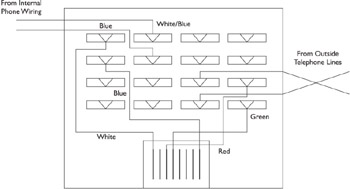
Figure 2-23: A diagram of wiring for a single telephone line in an RJ-31X jack
Wiring RJ 45 Jacks and Plugs
The RJ-45 jacks and plugs are the standards for terminating TP cable used for data networks. However, these connectors are more commonly known by the networking standards (568a and 568b) that are used to configure the jack and plug connections. While RJ-45 describes the USOC jack and plug used to make the connections in a data network, other standards are used to describe the actual wiring of the jack and plug.
TP Wire Color
In a standard four-pair unshielded twisted-pair (UTP) cable (Cat 5, Cat 5e, Cat 6, and Cat 7), each pair of wires shares a base color. As shown in Figures 2-24 and 2-25, the base colors are orange, blue, green, and brown. One of the wires in each pair has a solid color jacket and one has a jacket with a color strip alternating with a white strip.
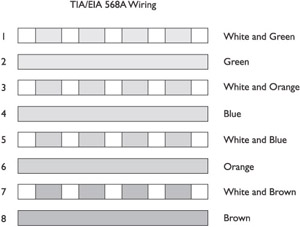
Figure 2-24: The Electronics Industry Association/Tele-communications Industry Association (EIA/TIA) 568A RJ-45 wiring configuration
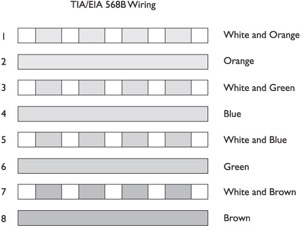
Figure 2-25: The EIA/TIA 568B RJ-45 wiring configuration
The color-coding on the wires provides you with end-to-end consistency when you are terminating a cable with connectors. If the wires were all one color, it would be easy to get your wires crossed.
Installing an RJ-45 plug on a UTP cable is a matter of orientation and color. Orienting the plug to receive the cable wires consists of turning the plug so that the locking tab, or what the Telco people call the “hook,” is on the bottom and the open end of the connector is towards you.
With the plug in this position, Pin 1 is located on the left side and Pin 8 is located on the right side. It’s important to know where Pin 1 is located so that the correct wires are inserted into the correct pins.
Most quality jacks are color-coded on their IDC contacts or if the jack is a crimp-on type, on a bar located above the pin contacts. On a punchdown block, Pin 1 is indicated with the number 1 and on a crimp-style jack, Pin 1 is on the far-left side and Pin 8 is on the far-right side (looking at the jack from the front).
TP Wiring Standards
The two wiring standards used to define how TP cable is attached to an RJ-45 jack or plug are Electronics Industry Association/Telecommunications Industry Association (EIA/TIA) 568A and 568B.
The primary difference between these two cable standards is the sequence and placement of the green and orange wire pairs on the plug or receptacle. Actually, for a computer network installation, there is actually no difference in performance between the two standards because the color of a wire’s jacket has no bearing on the signal being transmitted. However, if the cable is intended to carry both data and voice (telephone) traffic, the 568A standard (Figure 2-26) is backward compatible with the older USOC telephone standards and EIA/TIA 568B (Figure 2-27) doesn’t support voice signals.

Figure 2-26: The EIA/TIA 568A cable termination standard for TP cable also supports voice signals.
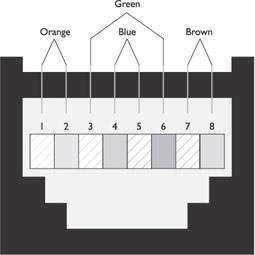
Figure 2-27: The EIA/TIA 568B cable termination standard for TP cable
| Note |
Although 568B has been the most commonly used of the two 568 standards, especially in commercial installations in the United States, most technical and trade organizations generally agree that all future installations should use the 568A configuration to avoid problems with integrated voice and data systems in the future. |
TP EIA/TIA 568 Pinouts
When you install an RJ-45 jack or plug on the end of a UTP cable, it is very important that you match the correct pin to the correct wire color. However, beyond the differences between 568A and 568B, there are differences between the pinout (which pin is connected to which wire) patterns required to support different types of connections made between different types of hardware. The pattern you use depends on the requirements of the equipment to which the cable will be attached. Table 2-4 lists the types of wiring patterns used in common network situations.
|
Connection Type |
Pattern |
|---|---|
|
Computer-to-hub/hub-to-computer |
Straight-through |
|
Computer-to-computer |
Cross-connect (crossover) |
|
Computer-to-Internet gateway |
Cross-connect (crossover) |
Straight-Through PinoutA straight-through pinout on an RJ-45 connector matches the same color wires on both the plug and the receptacle. In other words, the orange, blue, green, and brown wires on the plug match up and connect to the orange, blue, green, and brown wires on the receptacle. Tables 2-5 and 2-6 list the pinouts for straight-through EIA/TIA 568A and EIA/TIA 568B connections, respectively. Figures 2-26 and 2-27 show illustrations of these two configurations.
|
Pin |
Wire Color |
|---|---|
|
1 |
White-green |
|
2 |
Green |
|
3 |
White-orange |
|
4 |
Blue |
|
5 |
White-blue |
|
6 |
Orange |
|
7 |
White-brown |
|
8 |
Brown |
|
Pin |
Wire Color |
|---|---|
|
1 |
White-orange |
|
2 |
Orange |
|
3 |
White-green |
|
4 |
Blue |
|
5 |
White-blue |
|
6 |
Green |
|
7 |
White-brown |
|
8 |
Brown |
Cross-Connect/Crossover PinoutCross-connect connector configuration is used when the cable is installed between a computer (actually, the computer’s network adapter) and a network hub. The 568A and 568B crossover patterns reverse two of the wire pairs to connect the transmit pins at one end of the cable to the receive pins at the other end. Tables 2-7 and 2-8 list the pinouts for the jacks and plugs at each end of a cross-connect or crossover connection for EIA/TIA 568A and 568B, respectively, and Figures 2-28 and 2-29 illustrate these wiring patterns.
|
Connector |
||
|---|---|---|
|
A Pin |
Wire Color |
B Pin |
|
1 |
White-green |
3 |
|
2 |
Green |
6 |
|
3 |
White-orange |
1 |
|
4 |
Blue |
7 |
|
5 |
White-blue |
8 |
|
6 |
Orange |
2 |
|
7 |
White-brown |
4 |
|
8 |
Brown |
5 |
|
Connector |
||
|---|---|---|
|
A Pin |
Wire Color |
B Pin |
|
1 |
White-orange |
3 |
|
2 |
Orange |
6 |
|
3 |
White-green |
1 |
|
4 |
Blue |
7 |
|
5 |
White-blue |
8 |
|
6 |
Green |
2 |
|
7 |
White-brown |
4 |
|
8 |
Brown |
5 |
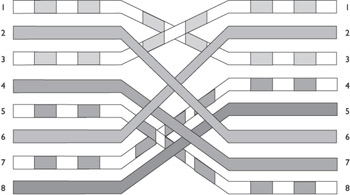
Figure 2-28: Pinout for crossover EIA/TIA 568A connection
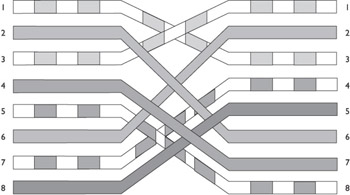
Figure 2-29: Pinout for crossover EIA/TIA 568B connection
Attaching an RJ 45 Connector
To attach an RJ-45 plug to a UTP cable, follow these steps:
- Strip away about 1.25-inches of the outer jacket of the UTP cable. Use a CatX (the X represents category cables 3 and above) cable stripper, if one’s available. The cable sheathing should not be stripped more than 1.25-inches from the connection end of the cable and 1-inch is best.
- Untwist the exposed wire pairs, but avoid untwisting the wires at the end of the jacket. UTP wire should not be untwisted more than 0.5-inch and 0.375-inch is best.
- Arrange the wires in a flat row in the order that matches the pinout pattern for the cable purpose (see the preceding sections). For example, for a straight-through connector, arrange the wires left to right as white-green, green, white-orange, blue, white-blue, orange, white-brown, and brown.
- Use wire-cutters to trim the length of the wires to 0.5-inch. There is no need to strip the individual wires.
- Insert the wires into the RJ-45 plug, ensuring that the wires remain in the required pattern.
- Use an RJ-45 crimping tool (see Figure 2-30) to push the gold insulation displacement contacts into contact with the wires. The crimper also pushes down a hinged tab that presses against the insulation of the wire to hold it into the plug and create a strain relief. Some crimper tools when used with special connectors also cut the wires extending beyond the other side of the connector.
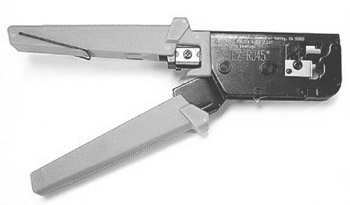
Figure 2-30: A crimping tool used to install RJ-45 plugs on UTP cableNote Actually, you can buy UTP cables with RJ-45 connectors attached. This can be very expensive for longer run cables. However, it is a good option for patch cords and cables.
Punchdowns and IDC Connectors
In many networking situations, centralizing the network resources provides for better control, maintenance, and security. Not all home networks are large enough to require centralization, but in a larger home with several networked subsystems, having the servers, controllers, and source devices in a central location is generally a good idea.
Using a central wiring closet or panel simplifies network maintenance, troubleshooting, and expansion. The central wiring panel terminates all of the network cabling and provides an interface for all of the controlling devices to all of the home automation network as is needed.
For the TP cable part of a home network, a patch panel can be used as the clustering device. A patch panel looks, and in many ways functions, like the old operator-controlled telephone switchboards (see Figure 2-31). Cable home runs terminate to the back of the patch panel using IDC contacts. A patch cord is then used to connect each run to the next upstream device as appropriate. For example, the patch panel can interconnect a networked computer to a network switch that supports both voice and data services.
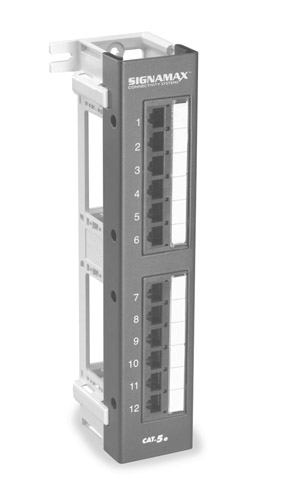
Figure 2-31: A patch panel with RJ-45 jacks
Photo courtesy of SignaMax Connectivity Systems.
The two most common types of IDC contacts are the 66 block and the 110 block. The 66 block is used primarily in telephone and voice system connections. The 110 is used for data networks. The wires of the TP cable are pressed into the IDC contacts using a punchdown tool, shown earlier in Figure 2-21.
Fiber Optic Connectors
Fiber optic cable is included in several types of structured wiring cable bundles and often installed in homes for two reasons: for its speed and bandwidth, and for future-proofing the home. Few home system devices currently exist that connect to fiber optic cable.
Fiber optic cable is terminated using one of three general types of connectors:
- Interface connectorsConnectors that connect a fiber optic cable to a networking device
- Inline connectorsConnectors that mates two glass or plastic fibers from separate cable runs to form a temporary joint
- SplicesConnectors that create a permanent joint between two fiber optic cable runs
In each of these connections, the termination must use an approved connector that is properly installed to minimize light loss and protect the cable from dirt or being damaged. More than 75 different interface and inline connectors are available on the market that can be installed in several different ways, but luckily only a few are commonly used in most residential applications. And fortunately, there are only two ways to splice a cable.
As I discussed in Chapter 1, fiber optic cable is single-mode, multimode, or plastic optical fiber (POF). Different connectors and splicing methods are used for each type of fiber optic cable. When connecting or splicing fiber optic cable, you must first know which type of cable you are working with.
Fiber Optic Connector Basics
The two basic types of fiber optic connectors are butt-jointed and expanded-beam connectors.
Butt-jointed connectors align two prepared fiber ends into very close proximity or in contact with one another. There are two types of butt-jointed connectors: ferrule and biconical.
- Ferrule connectorsThis type of butt-jointed fiber optic connector uses two cylindrical ceramic plugs (called ferrules) and an alignment sleeve. The exposed and prepared fiber strand is inserted into precision holes through the center of each ferrule, which aligns it properly. The quality of this type of connection is dependent on how accurately the center holes of each ferrule are in alignment. Epoxy resin adhesive is used to permanently hold the fiber strand in the ferrule. The ends of the fiber strands must be polished so that they are flush with the end of the ferrule to prevent light loss in the connection. The ferrules are inserted into the alignment sleeve, which by aligning the ferrules, aligns the fiber strands. This is the method used for straight tip (ST) connectors.
- Biconical connectorsThis type of butt-jointed connector uses two cone-shaped plugs that are inserted into a double cone-shaped alignment sleeve. Springs in each plug provide the tension that joins the two fiber strands. Epoxy resin is used to secure the plugs into the alignment sleeve. A threaded outer shell is then used to lock in the alignment of the fibers.
Expanded-beam connectors use lenses to expand and refocus light from one fiber to another. Like butt-jointed connectors, expanded-beam connectors are made up of two plugs and a coupling alignment device.
Fiber Optic Connectors
When choosing a fiber optic connector for residential structured wiring, there are four criteria to consider:
- AvailabilityIs the connector a standard connector and will it be readily available for future expansion or repair work?
- CompatibilityIs the connector compatible with the bridging and source equipment?
- ToolsAre special tools required to install or test the connector?
- ReliabilityIs the connector reliable and subject to certain environmental conditions?
Note Of the connectors listed in this section, the ST connector is considered to be the most reliable, available, and compatible of the fiber optic connectors.
The most common fiber optic connectors that should be used in a residential situation are
- SCThis connector, shown in Figure 2-32, is a push-pull snap on and off connector that is very similar to audio and video connectors in that it is small enough in size to allow multiple connectors to connect into a patch panel or other networking devices. SC (568SC) is the connector currently specified by TIA 568 for both single-mode and multimode fiber cable.
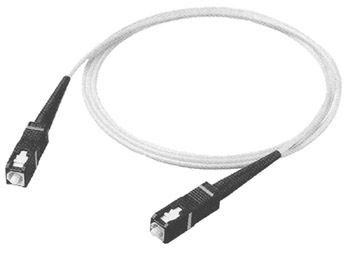
Figure 2-32: An SC fiber optic plug - Straight tip (ST) The ST connector (see Figure 2-33) was the original standard for fiber optic connections, but is no longer recommended by TIA for new installations. It has been replaced by the SC (568SC) connector in the current standards.
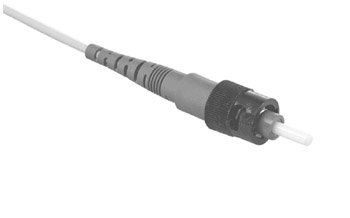
Figure 2-33: An ST fiber optic plug
Photo courtesy of Fiber Connections, Inc.
- Lucent connector (LC)The LC connector (see Figure 2-34) looks just like an SC connector, but is one-half its size. The size of the LC is based on the size of the RJ-45 connector and is designated as a small form factor (SFF) connector for fiber optic cable.
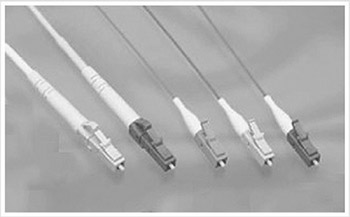
Figure 2-34: LC fiber optic connectors
Photo courtesy of FiberSource Inc.
- Face contact (FC)The FC connector (see Figure 2-35) uses a threaded plug and sockets to create a secure connection.
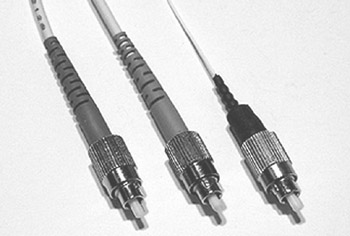
Figure 2-35: FC fiber optic connectors
Photo courtesy of FiberSource Inc.
- SMAThe SMA connector uses a threaded plug and socket that is the first connector standardized in the industry. (See Figure 2-36.)
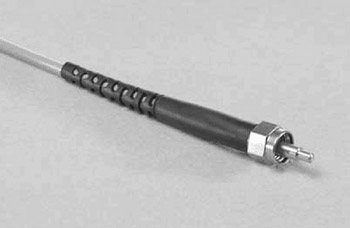
Figure 2-36: An SMA fiber optic connector
Photo courtesy of FiberSource Inc.
- Physical contact (PC) Actually, PC is used to describe the end-face polishing used in a connector. The most common of the PC connectors is the FC/PC. A variation of PC is angled polished connector (APC).
- MT-RJA small form factor two-fiber connector, the MT-RJ connector (see Figure 2-37) is based on the form and size of the RJ-45 connector, which accounts for the RJ in its name.
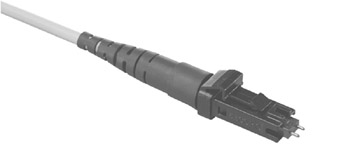
Figure 2-37: An MT-RJ fiber optic connector
Photo courtesy of Fiber Connections, Inc.
| Note |
I’ve tried to provide a meaning for the acronyms or abbreviations used for the different fiber optic connectors. However, some meanings are lost to history, assuming that they existed at some point. |
Fiber Optic Cable Preparation
In order for fiber optic connections to be secure, the fiber strands must be cleaned before they are mated. Even at the size of a fiber optic strand, dust particles can cause up to 1 dB of signal loss if the cable ends aren’t properly cleaned. Dust can be easily removed from the cable and its glass or plastic strands with a blast from a can of compressed air.
Anytime a cable connection is unmated (disconnected), a rubber or plastic boot should be immediately placed over the ends of the cable or its ferrule to prevent dust from contaminating the cable end.
In addition to removing any dust from the end of the cable, the cable end should also be cleaned using a lint-free cloth or tissue, denatured alcohol, and canned dry air. Saturate the cloth or tissue in alcohol and use it to clean the sides of the connector ferrule. Immediately after cleaning, make the connection. Use the compressed air to clean the outside of the connector housing and receiver ports, if any.
| Note |
Here’s a very important safety tip: Never, I repeat never, look directly into the end of a fiber optic strand. It only takes milliseconds for the intense light in the cable to damage your eye permanently. You should also never touch the end of a fiber strand, but this has more to do with cleanliness. |
Stripping a Fiber Optic Cable
To strip a fiber optic cable (see Figure 2-38), you should perform these steps:
- Remove the outer jacket of the cable using an electrical stripping tool.
- Use a knife or scissors to remove the Kevlar (the same stuff used in bullet-proof vests) strength member. Avoid cutting too deeply into the buffer, coating, and sealing layers around the glass or plastic fiber strand.
- Carefully remove the buffer, coating, and sealing layers around the fiber strand using a special fiber stripper tool to avoid creating surface flaws or scratches, which could cause the cable to fail.
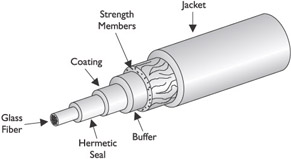
Figure 2-38: The construction of a fiber optic cable
Each fiber optic connector has a unique and required process when it comes to installing the components of the connector. Follow the manufacturer’s instructions to the letter to ensure a proper connection that minimizes light loss.
Fiber Optic Connector Standards
Like TP cabling, the standard for cabling and connectors for fiber optic cabling is defined in American National Standards Institute/ Electronics Industry Association/Telecommunications Industry Association (ANSI/EIA/TIA) 568A and soon in a new section for the ANSI/EIA/TIA 568B standard that’s currently under development. At present, the 568A standard specifies the SC connector as the 568SC connector, but TIA has published a standard called the Fiber-Optic Cable Intermatability Standard (FOCIS) that recognizes, among others, the fiber optic connectors, listed in Table 2-9 with their standard commercial names.
|
Connector Type |
FOCIS Designation |
|---|---|
|
FC |
FOCIS-4 |
|
SC |
FOCIS-3 |
|
SMA |
FOCIS-1 |
|
ST |
FOCIS-2 |
Computer Data and Cable Connectors
In addition to the RJ connectors I described earlier in the chapter, personal computers (PCs) use a variety of other connectors. These connectors are used to connect to peripheral and other devices, such as printers, scanners, and the like.
Three basic types of physical connectors are most commonly used with PCs:
- Data bus (DB) series connectors
- Universal Serial Bus (USB) connectors
- Institute of Electrical and Electronic Engineers (IEEE)-1394 connectors
Serial Versus Parallel
External connections made to a PC use either serial or parallel data transmission modes. Serial transmissions transfer data one bit at a time in series using a form of single-file transmission over a single transmission line. Parallel transmissions transfer data in waves that are made up of several parallel bits moving on separate transmission lines. Figure 2-39 illustrates the basic difference between these two transmission modes.
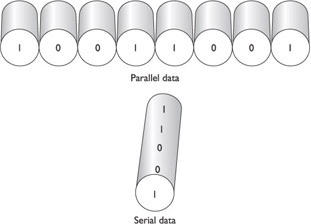
Figure 2-39: Serial data is transmitted one bit at a time over a single line (bottom) and parallel data is transmitted as a wave of bits on several parallel lines (top).
DB Series Connectors
As I defined earlier in the chapter, a DB connector is a computer and device connector that is used to transfer data between two serial or parallel interface devices. Typically, the number of pins available in its plug and the matching number of receptacles in its jack are used to specify a DB connector. For example, a DB-25 connector (see Figure 2-2 earlier in the chapter) has 25 pins and 25 receptacles in its plug and jack, respectively. Likewise, a DB-9 connector has nine pins and receptacles.
USB Connectors
The USB provides a high-speed data bus that provides an easy way to connect peripheral devices to a PC. A USB port supports data transfer at speeds of 12 million bits per second (Mbps), which is much faster than the interface available on a standard serial port. USB ports are standard to most newer PCs. Figure 2-40 illustrates a USB connection being made on a PC.
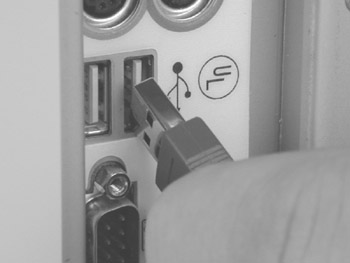
Figure 2-40: A USB plug being inserted into a USB jack on a PC
There are two types of USB connectors, see Figure 2-41. Type A connectors are found on PCs and some device interfaces. Type B connectors are found on devices that connect to a PC over a USB connection.
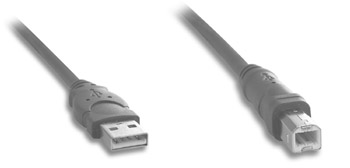
Figure 2-41: USB cables have different plugs for the computer or hub (right) and the peripheral device (left) jacks.
Photo courtesy of Belkin Components.
IEEE 1394 Connectors
IEEE-1394 connectors are more commonly known by the brand or model names given to them by manufacturers. Perhaps the best-known commercial names for IEEE-1394 connections are FireWire, which is the name used by Apple Computer, and iLink, the name used by the Sony Corp.
IEEE-1394 transfers data in speeds up to 800 Mbps and a single 1394 port can support up to 63 additional external devices. IEEE-1394 uses a transfer technology that is similar to USB, but these two data bus technologies are more complementary than competitive. The connectors for IEEE-1394 are also similar to the USB connectors (see Figure 2-42) and, like USB, IEEE-1394 is hot swappable, which means it can be connected and disconnected from the PC without shutting down the PC.

Figure 2-42: An illustration of top and front views of an IEEE-1394 plug
Audio Video Cable Connectors
The connectors used to terminate the various wire and cable types used on audio systems are fairly standardized. Some systems have multiple connector choices, like the system shown in Figure 2-43.
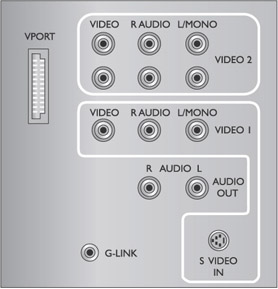
Figure 2-43: The back panel of an audio/video device showing the jacks for a variety of signal and connector formats
Audio Connectors
Audio connections use many of the same connectors as data networks and video systems. However, while the connection is very much the same, the application is different. The primary connectors used for audio systems are
- Bayonet Neill Concellman (BNC)This connector type provides a mechanically solid twist-lock connection. Although it’s most commonly used with coaxial cable, this connector can be used with other cable types as well. BNC connectors are used in high-end installations for high-quality audio and video systems. See Figure 2-15 earlier in the chapter for an example of a BNC connector.
- IEEE 1394 (High Performance Serial Bus [HPSB])Like USB, IEEE 1394, shown in Figure 2-42, is a high-speed serial interface for computers. More commonly known by vendor names, such as FireWire (Apple) and iLink (Sony), IEEE 1394 allows for high-speed connection between a computer and digital devices, such as video cameras, digital still cameras, and digital sound devices.
- Radio Corporation of America (RCA) connectorRCA connectors are a plug and jack combination designed for use with coaxial cable. This connector style is designed to carry a wide range of audio frequency (AF) signals, from very low to several megahertz. RCA connectors are also called phono plugs and jacks. Figure 2-44 shows a crimp-on RCA plug.
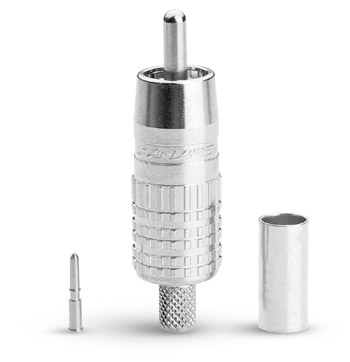
Figure 2-44: A crimp-on RCA plug
Photo courtesy of Canare Corporation of America.
- TOSLink (a.k.a. Optical Digital Audio Output)If TOS has a meaning, it is lost forever. However, TOSLink is a fiber optic digital audio interface commonly used to connect a digital source (typically a DVD or CD player) to a digital receiver or pre-amplifier. Data is passed as laser (light) pulses that minimize interference and signal degradation. Figure 2-45 shows an example of a TOSLink cable.

Figure 2-45: A TOSLink optical digital audio cable
Photo courtesy of Monster Cable Products, Inc.
- Triple RCAAn enhanced version of component video and standard RCA connectors, this connector type is used for component video signals (red, green, and blue). High-definition television (HDTV) uses this special type of component video cable (see Figure 2-46).
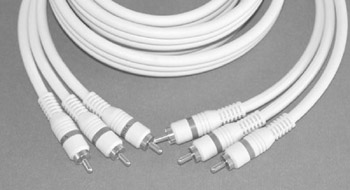
Figure 2-46: A triple RCA cable - USBUSB is a high-speed serial interface for computers that allows peripheral devices to be added to the system on a plug-and-play basis without the need to shut down the computer before or after the device is added. USB is a digital data interface and will allow USB CD, DVD, speakers, and other audio devices to be connected to a computer using what is called hot-swap. See Figures 2-40 and 2-41 earlier in the chapter for views of USB connectors.
- XLRXLR connectors are primarily used for professional-level analog audio connections. XLR cables use positive and negative ground carriers, as do RCA cables, but the XLR cable adds a ground circuit. Figure 2-47 shows an XLR connector jack.
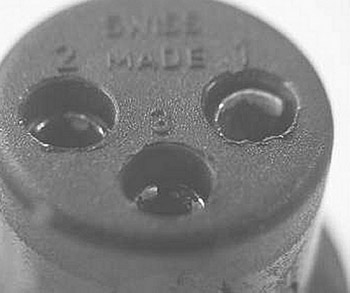
Figure 2-47: The jack of an XLR connector
Preparing Audio Cable
In a structured wiring environment, audio signals can be distributed over either speaker wire, coaxial cable, or fiber optic cable. TP cable may also be used, but that is generally not a good first choice for this purpose unless it is digital audio.
| CROSS-REFERENCE |
See Chapter 16 for information on installing RCA and other audio connectors. |
| Note |
The process used to prepare coaxial, fiber optic, or TP cabling for termination with an audio connector is the same as described earlier in the chapter for each of these cable types. |
Video Connectors
Video systems and audio systems have many connector types in common. In fact, what may be classified as a video connector is often an audio/video connector in that the connection services both media.
The primary video connectors used in a structured wiring environment are
- Component (also called digital component)The newest of the cable and connector types, component connectors provide the best picture quality. The video signal is separated into individual red, green, and blue (RGB) color components, which results in better color and clarity. The connection for a component cable has three plugs, one for each color component. Make sure the colors are matched to the device jack colors. The connectors for a component video connection are shown in Figure 2-48.
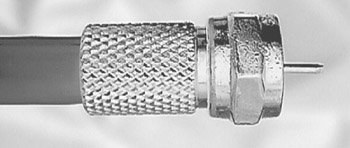
Figure 2-48: A component video cable showing the component video connectors
Photo courtesy of Canare Corp. of America.
- CompositeA standard video signal format that contains color, brightness, and synchronization information. Virtually all VCRs and other legacy video equipment have a composite video input or output. The most commonly used jacks and plugs for composite video are RCA connectors. This signaling and connection format is distinctive in that it uses a yellow jack for video, a white jack for left-side audio, and a red jack for right-side audio.
- Digital Video Interface (DVI)This interface connector, shown in Figure 2-49, provides connections for both analog and digital monitors on a single cable. Each of the three DVI configurations is designed to accommodate either analog (DVI-A), digital (DVI-D), or integrated (DVI-I) signals. When a DVI connector and port are used, the digital signal sent to an analog monitor is converted to an analog signal. If the monitor is a digital monitor, such as a flat panel display, no conversion is performed.
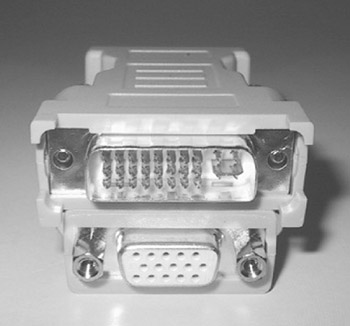
Figure 2-49: A DVI-I cable with connectors
Image courtesy of Texas Instruments, Inc.
Because Hollywood and the movie industry fears the image quality possible with DVI may make it possible to illegally copy and distributed high-quality bootlegs of their films, the High-Bandwidth Digital Content Protection (HDCP) standard has been developed to work with DVI circuits. HDCP circuitry is added to the DVI connection on both the transmitter (DVD player, cable box, and the like) and to the receiver (projector, LCD TV, etc.). The HDCP circuits encrypt the video content, which prevents a copy of the original content from being played.
- F-type connectorThis is the common connector used for video signals such as connecting a cable television service or an Internet connection service to a TV set, receiver, or Internet gateway using coaxial cable. This connector is secured by screwing its locking cap onto a threaded jack.
- High-Definition Multimedia Interface (HDMI)An improvement over the DVI interface, HDMI (see Figure 2-50) supports either RGB or YcbCr digital video at rates well above the 2.2 Gbps required by HDTV. HDMI also supports up to eight channels of digital audio.

Figure 2-50: An HDMI plug
Image courtesy of Texas Instruments, Inc.
- Super Video (S-Video) The signal is split into two color groups: Chrominance and Luminance. Chrominance carries color information and Luminance carries brightness and lighting information. S-Video is used primarily to transmit video signals to a television from a VCR or game device. The pin configuration on the jack and plug (see Figure 2-51) on a S-Video connection prevent the connection from being made incorrectly.
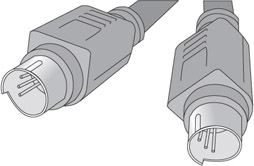
Figure 2-51: An S-Video plug. - Video Port (VPort) This connector type is primarily used to connect video game devices that have a VPort connector that carries a composite video signal. VPort was originally designed to host the Microsoft Xbox video gaming device on RCA televisions.
Speaker Connectors
Speaker wire is typically connected to a speaker using one of six common attachment methods:
- Banana plugThe single prong on this connector is slightly bulged in the center, which gives it a banana look. A banana plug, see Figure 2-52, is attached to the stripped end of a speaker wire inserted through a hole in the body of the connector using a set screw. Banana plugs can be used on either end of a speaker patch cord and a banana jack used to terminate the distributed speaker wire in a wall outlet.
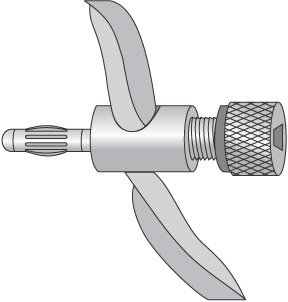
Figure 2-52: A banana plug attached to a speaker wire - Binding postA binding post, see Figure 2-53, is a five-way connector to which a speaker wire can be attached in a variety of ways. Its primary connection method is a threaded shaft on which a screw knob can be tightened to anchor a spade lug or a loop of bare wire. However, the post shaft is hollow and will accept a banana plug or, like a banana plug, there is a horizontal hole in the shaft through which a speaker wire can be inserted and anchored with the knob. The shaft is also sized to accept a pin connector.
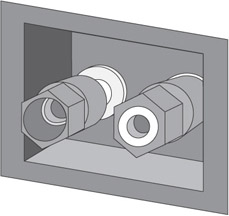
Figure 2-53: A pair of binding post connectors on the back of a speaker - Pin connectorAlthough they’re most commonly used for test equipment, pin connectors, like the one in Figure 2-54, can be attached to a speaker wire and used to connect to a binding post by inserting the pin of the connector into the top of the binding post’s shaft.
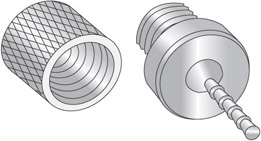
Figure 2-54: A screw-on pin connector can be used to connect speaker wire to a binding post. - Screw terminalSome older speakers may have screw terminals, which are used to anchor a speaker wire terminated with a spade lug or a loop of bare wire. The setscrew is either a screw that is tightened with a screwdriver (see Figure 2-55) or a metal or plastic knob that can be tightened by hand.

Figure 2-55: A two-post screw terminal - Spade (lug)Spades, see Figure 2-56, and other types of lug connectors are connections commonly used for terminating a speaker wire at the speaker. Spades are crimped or soldered on individual speaker wire conductors. Spades, also called Y-posts, and other lugs are placed at the end of the patch cord that connects a wall outlet to a speaker (the other end of the patch cord is usually a banana plug).
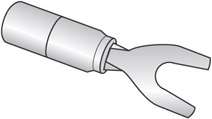
Figure 2-56: A spade is a type of lug connector that is commonly used with speaker connections. - Spring clipThis connector (see Figure 2-57), which is also called a push terminal, is a very common connector on lower-end speakers. A stripped speaker wire is inserted in the hole of the connector while a spring-loaded lever is pressed down. When the lever is released, gripping teeth on the inside of the connector clamp on the wire.
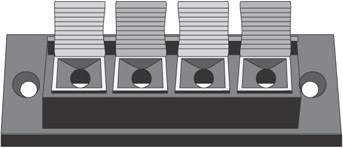
Figure 2-57: Spring clip connectors are commonly found on less expensive speakers.
Review
The basic types of power connectors are: lugs, plugs, receptacles, and terminal strips. Electrical plugs and electrical power characteristics vary from country to country.
In a structured wiring system, the primary coaxial cable types used are RG6 and RG59 and the common coaxial connector is the “F” connector. The two methods used to attach an F-type connector are crimp-on and twist-on.
Cat 3, 5, 5e, and higher TP cable typically use one of the following modular connectors: RJ-11, RJ-31x, or RJ-45. The connector used depends on the number of lines the jack is supporting and its application. These modular connectors are standardized in the USOC, which defines the standard telephone and data communications jacks and plugs.
RJ-11 jacks and plugs use a 66-type punchdown with IDC contacts into which wire is inserted with a punchdown tool. RJ-31X jacks are connected to outside phone lines and optionally to a home’s inside phone lines to allow a security system to seize the line and prevent interruptions when it is alerting a monitoring service. RJ-45 jacks and plugs are standard for terminating TP cable for data networks.
In a standard four-pair UTP cable, each pair of wires shares a base color: orange, blue, green, and brown, and one of the wires in each pair has a solid color and the other wire is marked with its color alternated with a white strip. The two wiring standards used to define TP cable connections in a network are EIA/TIA 568A and 568B. The 568A standard is backward compatible with the older USOC telephone standards and 568B doesn’t support voice signals.
To install an RJ-45 jack or plug, it is very important that you match the correct pin to the correct wire color. Which wiring pattern you use depends on the requirements of the networking equipment. A straight-through pattern is used to connect computers to hubs and a crossover pattern is used to link computers to other computers.
The use of a central wiring closet or panel simplifies maintenance, troubleshooting, and expansion for a network. The central wiring panel terminates all of the network cabling and provides an interface for all of the controlling devices to all of the home automation network as it needs. A patch panel can be used as a clustering device. Cable home runs terminate to the back of the patch panel using IDC contacts. A patch cord is then used to connect each run to the next upstream device as appropriate. The two most common types of IDC contacts are the 66 block and the 110 block. The 66 block is used primarily in telephone and voice system connections; the 110 block is used for data networks.
Fiber optic cable is included in several types of structured wiring cable bundles and is being installed in homes for two reasons: its speed and bandwidth and it future-proofs the home. Fiber optic cable is terminated using one of three general types of connectors: interface connectors, inline connectors, and splices.
The two basic types of fiber optic connectors are butt-jointed and expanded-beam connectors. Butt-jointed connectors align two prepared fiber ends into very close proximity or in contact with one another. There are two types of butt-jointed connectors: ferrule and biconical. Expanded-beam connectors use lenses to expand and refocus light from one fiber to another. The most common fiber optic connectors and those that should be used in a residential situation are: SC, ST, LC, FC, SMA, and MT-RJ. Fiber strands must be clean before being mated. The standard for fiber optic cabling and connectors is ANSI/EIA/TIA 568A and 568B.
The three basic types of physical connectors most commonly used with PCs are: DB series, USB, and IEEE-1394 connectors. External connections made to a PC use either serial or parallel data transmission modes. USB provides a high-speed data bus that provides an easy way to connect peripheral devices to a PC. IEEE-1394 connectors are known as FireWire and iLink. USB and IEEE-1394 connections are hot swappable.
Audio connections use many of the same connectors as data networks and video systems. The primary connectors used for audio systems are: BNC, IEEE 1394, RCA, TOSLink, USB, and XLR. Audio signals can be distributed over either coaxial cable or fiber optic cable. The primary video connectors are: component, composite, DVI, F-type, HDMI, S-video, and VPort.
Speaker wire is typically connected to a speaker using one of six common attachment methods: banana plug, binding post, pin connector, screw terminal, spade lug, and spring clip.
Questions
- A connector plug that has one or more pins extending from its housing is commonly called a
- Female plug
- Male plug
- Negative connector
- Positive connector
- Which of the following is the most commonly used connector for terminating coaxial cable as a part of a structured wiring system in a home?
- RJ-11
- F-type
- RJ-45
- Spade
- What connector type is used to interconnect telephone lines with a security system?
- RJ-11C
- RJ-21X
- RJ-31X
- RJ-45
- Which type of punchdown block is used to terminate data networking cable?
- 66 block
- 88 block
- 110 block
- 240 block
- What tool is used to connect a Cat 5e cable wire to an IDC contact?
- Punchdown
- Screwdriver
- Spring clip
- Twist-on
- What are the four wire colors used in a Cat 5e cable?
- Blue, green, red, black
- Orange, blue, green, brown
- Orange, blue, green, yellow
- White, black, red, green
- What is the wiring and connector standard that governs data networking?
- EIA/TIA 568
- NEC 411
- USOC
- NFSB
- Which of the following is not a commonly used fiber optic connector?
- RJ
- SC
- SMA
- ST
- What type of video signal interface separates the video images into RGB color components using three plugs, one for each color component?
- Composite
- Component
- DVI
- S-Video
- What type of speaker wire connection is a five-way connector that can be used to anchor a lug, bare wire loops, stripped wire, a banana plug, and a pin connector?
- Binding post
- Screw terminal
- Spade
- Spring clip
Answers
- B. A plug that has one or more receptacles in its housing is referred to as a female.
- B. F-type connectors are commonly used in home systems for coaxial cable terminations. RJ-45 and RJ-11 connectors require multiple wires and a spade connector may not provide the contact required for high-speed signal transmissions.
- C. RJ-11 and RJ-21 are other telephone line connections and an RJ-45 is used with data networking.
- C. A 66 block is used in telephone applications. An 88 block terminates up to 256 wire pairs in large telephone applications, such as a telephone company CO. As far as I know, I made up the 240 block.
- A. This tool is especially made to strip, cut, and insert a wire into an IDC contact.
- B. The only other choice listed that you may actually encounter is yellow, black, red, and green, which are the colors in telephone quad wire.
- A. Actually, the standards are 568A and 568B. The newer EIA/TIA 570 also specifies residential wiring standards. National Electric Code (NEC) Article 411 governs electrical connections. The other choices are not relevant at all.
- A. RJs (registered jacks) are communication connectors for TP wiring.
- B. Composite breaks the signal into two audio and one video channels, DVI is a Digital Video Interface, and S-Video breaks the signal into two components for chrominance and luminance.
- A. Screw terminals can anchor lugs or bare wire, a spade is a type of lug, and a spring clip connector only terminates bare wire.
Part I - Home Technology Installation Basics
- Wire and Cable Basics
- Connector Types and Uses
- Wiring Installation Practices
- Codes, Standards, and Safety Practices
Part II - Structured Wiring
- Infrastructure Wiring Basics
- Planning a Structured Wiring Installation
- Rough-In Installation
- Trim-Out Installation
- Troubleshooting Structured Wiring
Part III - Home Computer Networks
- Computer Network Basics
- Computer Network Hardware
- Computer Network Software
- Designing and Installing a Computer Network
- Troubleshooting a Home Network
Part IV - Audio/Video Systems
- Distributed Audio System Basics
- Designing and Installing Distributed Audio Systems
- Distributed Video Basics
- Designing and Installing Distributed Video Systems
- Troubleshooting Audio Systems
- Troubleshooting Video Systems
Part V. Home Lighting Management Systems
- Home Lighting Basics
- Home Lighting Devices
- Designing a Home Lighting Control System
- Installing a Home Lighting Control System
- Troubleshooting and Maintaining Lighting Control Systems
Part VI - Telecommunications
- Home Communication System Basics
- Designing and Installing a Home Telephone System
- Troubleshooting a Home Communication System
Part VII - HVAC and Water Management
Part VIII - Security System Basics
- Security System Basics
- Designing a Home Security System
- Installing a Home Security System
- Troubleshooting and Maintaining a Home Security System
- Home Security Surveillance Systems
- Home Access Control Systems
Part IX - Home Technology Integration
- Defining Users Needs and Desires
- User Interfaces
- Home Automation Controllers
- Programming
- Integrating the Connected Home
- Other Home Technology Integration Devices
Part X - Appendices
EAN: N/A
Pages: 300
